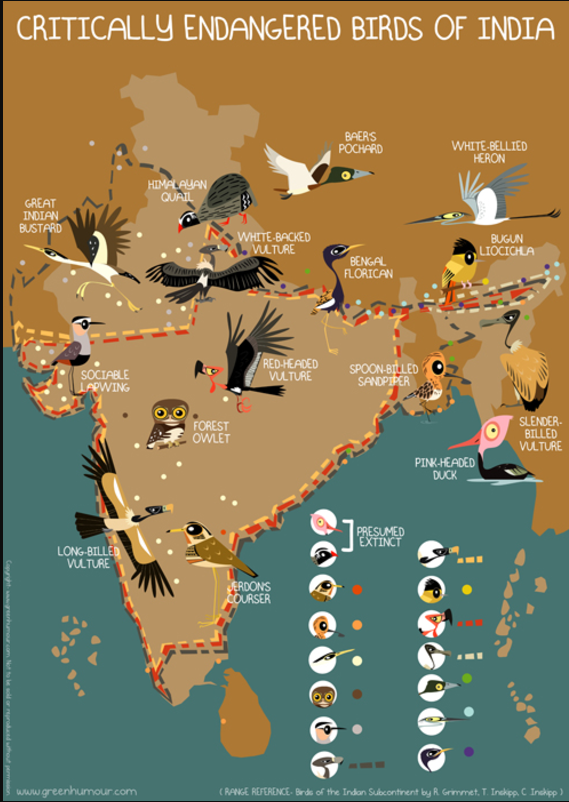4 December 2024 : Daily Current Affairs
1. PLI Scheme: Mixed Success with Promising Gains and Lingering Challenges
- 1. PLI Scheme: Mixed Success with Promising Gains and Lingering Challenges
- 2. Developing Nations Turn to ICJ Amid Disappointment Over Climate Finance Commitments
- 3. On World Wildlife Day, making a clarion call to protect India’s critically endangered species
- 4. New UN figures reveal huge cost of drought, desertification
- 5. DEVELOPING A SUSTAINABLE AND ROBUST AGRICULTURAL INDUSTRY
- PRELIMS FACTS
- 1. UK Passes Assisted Dying Bill: A Landmark Step in End-of-Life Care Debate
- 2. Gussadi dance
- 3. Centre proposes 95% govt. job reservation for locals in Ladakh
- 4. When a storm passes over land
- 5. South Korean President declares martial law, MPs vote to oppose the move
- 6. SARTHIE 1.0 INITIATIVE
- 7. MARITIME INDIA VISION 2030
- 8. Pradhan Mantri Ayushman Bharat Health Infrastructure Mission (PM-ABHIM)
- 9. Ratapani Wildlife Sanctuary Declared Madhya Pradesh’s 8th Tiger Reserve, Boosting Conservation and Ecotourism
(Source: Indian Express; Section: Cover Page; Page: 01)
| Topic: GS3 – Indian Economy |
| Context: |
|
Analysis of News:
About PLI Scheme
- PLI Scheme, commonly abbreviated as the Production Linked Incentive Scheme, is an initiative started by the Government of India.
- It is a form of performance-linked incentive to give companies incentives on incremental sales from products manufactured in domestic units.
- It is aimed at boosting the manufacturing sector and to reduce imports.
- These schemes have the potential of significantly boosting production, employment and economic growth over the next five years or so.
- In 2021, the Government had announced Rs 1.97 lakh crore (US$ 28 b) worth of PLI schemes for 13 key sectors. These sectors include:
- Auto components, Automobile, Aviation, Chemicals, Electronic systems, Food processing, Medical devices, Metals & mining, Pharmaceuticals, Renewable energy, Telecom, Textiles & apparel, White goods
- These schemes are in various stages of implementation by the implementing Ministries/ Departments.
- These PLI schemes are expected to have a cascading effect on the country’s Micro Small & Medium Enterprises (MSME) ecosystem.
Job Creation: Progress and Shortfalls
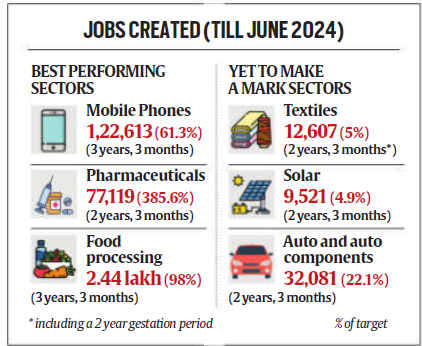
- As of June 2024, the PLI scheme has generated 5.84 lakh direct jobs, about 36% of the target of 16.2 lakh over five years. Notably:
- Top Performers: Food processing, pharmaceuticals, and mobile phones accounted for over 75% of jobs created.
- Lagging Sectors: Textiles and ACC battery schemes have created only a fraction of their targets due to eligibility challenges and delayed production.
Sectoral Highlights
- Mobile Phones: A standout performer with 1.22 lakh jobs created in three years, significantly boosting India’s electronics manufacturing ecosystem.
- Food Processing: Nearing its six-year target of 2.5 lakh jobs within half the timeline.
- Pharmaceuticals: On track to meet or exceed targets, leveraging India’s strong base in the sector.
- Textiles: Created just over 12,000 jobs, hindered by stringent eligibility criteria and a slow start.
- ACC Batteries: Minimal progress, with only 802 jobs created as production facilities are still being set up.
Challenges and Delays
- The PLI scheme faced initial delays due to the pandemic, with many sectors requiring a gestation period of 1-3 years.
- Structural issues, such as stringent eligibility criteria and the time required for plant commissioning, have further slowed progress in sectors like solar modules, medical devices, and specialty steel.
Financial Outlay and Investments
- With a total outlay of ₹1.97 lakh crore and private investments of ₹1.23 lakh crore, the scheme has attracted significant participation from 755 applicants, including MSMEs. However, the job creation impact remains uneven across sectors.
Recommendations for Improvement
- Streamlined Criteria: Simplify eligibility norms for smaller entities, especially in sectors like textiles.
- Accelerated Implementation: Fast-track production and incentivize quicker commissioning of plants in lagging sectors like ACC batteries and solar modules.
- Focus on Lagging Sectors: Provide additional support to underperforming sectors to meet their targets within the stipulated timeframe.
- Regular Monitoring: Strengthen oversight mechanisms to ensure timely progress and address bottlenecks.
Conclusion
- The PLI scheme has shown promising outcomes in a few sectors but remains a work in progress for others. With focused interventions and streamlined implementation, it can achieve its twin goals of enhancing domestic manufacturing and generating employment.
| What are the Issues with the PLI Scheme? |
|
Assembly vs. Value Addition:
WTO Constraints and Limited Value Addition:
Vague Disbursal of Incentives: While an Empowered Committee has been formed to oversee the scheme and handle fund disbursement for different sectors, the process of awarding incentives lacks clarity. There are no well-defined criteria or standardized parameters that ministries and departments use to determine the allocation of these incentives, raising concerns about the fairness and effectiveness of the scheme. Lack of a Centralized Database: The lack of a centralized database that captures information like increase in production or exports, number of new jobs created etc. make the evaluation process an administrative complexities. This information ambiguity impacts transparency and can lead to malfeasance, further widening the fault lines and weakening the policy structure. |
|
PYQ: Consider, the following statements: (2023) Statement-I: India accounts for 3.2% of global export of goods. Statement-II: Many local companies and some foreign companies operating in India have taken advantage of India’s ‘Production-linked Incentive’ scheme. Which one of the following is correct in respect of the above statements? (a) Both Statement-I and Statement-II are correct and Statement-II is the correct explanation for Statement-I (b) Both Statement-I and Statement-II are correct and Statement-II is not the correct explanation for Statement-I (c) Statement-I is correct but Statement-II is incorrect (d) Statement-I is incorrect but Statement-II is correct Ans: (d) |
| Practice Question: Evaluate the performance of India’s Production-Linked Incentive (PLI) scheme in boosting domestic manufacturing and job creation. Highlight the challenges faced by underperforming sectors and suggest measures for improving its implementation. (250 words/15 m) |
2. Developing Nations Turn to ICJ Amid Disappointment Over Climate Finance Commitments
(Source: Indian Express; Section: Explained; Page: 16)
| Context: |
|
Analysis of News:
Shift to Judicial Action: ICJ Case on Climate Obligations
- In response to inadequate action at climate negotiations, developing countries, led by small island states, have taken their concerns to the International Court of Justice (ICJ).
- A resolution initiated by Vanuatu, adopted by the UN General Assembly, seeks the ICJ’s advisory opinion on countries’ climate obligations and the legal consequences of failing to fulfill them under international laws.
Potential Implications of ICJ Advisory Opinion
- While the ICJ opinion is non-binding, it could significantly influence climate negotiations and litigation.
- It might redefine developed countries’ obligations beyond the UNFCCC and Paris Agreement to include other legal frameworks, such as human rights conventions and maritime laws.
- This could strengthen calls for accountability and compensation for climate-related damages, especially for vulnerable nations.
Precedent for Climate Lawsuits
- The ICJ ruling could set a precedent for over 2,600 climate-related lawsuits globally, including recent landmark cases holding governments accountable for failing to meet emission targets.
- Such rulings have expanded the scope of human rights to include protection from climate harm, as seen in India and Switzerland.
Global Participation and Interest
- The ICJ case has garnered record engagement, with 97 countries and several international organizations participating.
- Even nations with limited acceptance of ICJ’s authority, such as the US, China, and India, have made submissions.
- This underscores the global recognition of climate change as a critical legal and diplomatic issue.
Way Forward
- While diplomatic efforts remain central to climate action, judicial interventions like this ICJ case can reinforce accountability, guide negotiations, and push for equitable solutions.
- Developing nations must continue leveraging legal avenues alongside diplomacy to secure fair commitments from wealthier counterparts.
| What are the functions of the International Court of Justice? |
|
The ICJ has two types of jurisdictions – contentious and advisory. Contentious jurisdiction – It refers to resolving legal disputes between consenting states, under advisory jurisdiction.The UN General Assembly (UNGA), the Security Council (SC) and other specialised bodies of the organisation can request the ICJ for an opinion on a legal question. Advisory jurisdiction – Unlike decisions given under the contentious jurisdiction, the ICJ’s advisory opinions are non-binding. The ICJ’s advisory opinion on climate change will also be handy in climate-related litigation at the national level. |
| Practice Question: Discuss the significance of the UN General Assembly’s resolution seeking an advisory opinion from the ICJ on the legal responsibilities of countries towards climate change. What role do international laws play in holding developed nations accountable for climate actions? (250 words/15 m) |
3. On World Wildlife Day, making a clarion call to protect India’s critically endangered species
(Source – The Hindu, International Edition – Page No. – 6)
| Context |
|
India’s Rich Biodiversity
- India, with only 2.4% of the world’s land area, is home to 7-8% of all recorded species.
- This includes 45,000 species of plants and 91,000 species of animals, making India one of the most biodiverse countries in the world.
World Wildlife Conservation Day
- Celebrated on December 4, World Wildlife Conservation Day highlights the importance of protecting India’s biodiversity.
- The day serves to evaluate efforts made towards conserving critically endangered species that live in India.
Biogeographic Zones and Species Diversity
- India consists of 10 biogeographic zones, contributing significantly to global biodiversity. India is home to 8.58% of mammalian species, 13.66% of avian species, 7.91% of reptiles, 4.66% of amphibians, 11.72% of fish species, and 11.8% of plant species.
- The country also hosts four out of the 34 globally recognized biodiversity hotspots: the Himalayas, Indo-Burma, Western Ghats-Sri Lanka, and Sundaland.
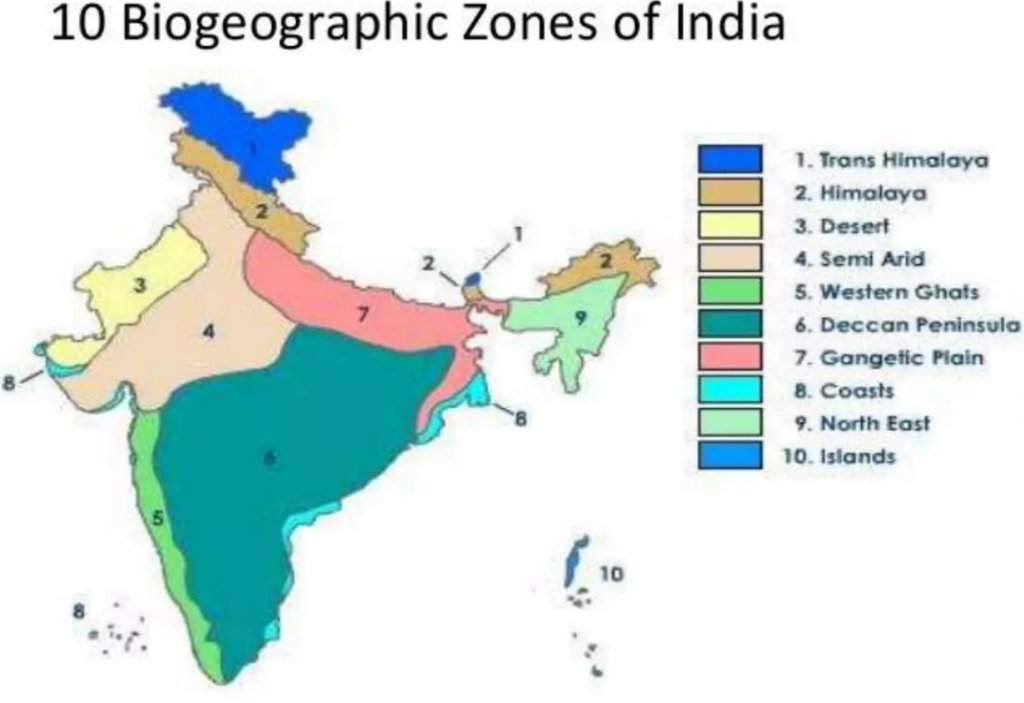
Conflict with Economic Growth
- Despite its rich biodiversity, India’s growth trajectory, driven by its large population and demand for natural resources, often conflicts with wildlife conservation.
- The increasing need for land, timber, coal, and other resources puts wildlife habitats at risk, leading to human-wildlife conflicts.
Critically Endangered Species in India
- As of 2022, there are 73 critically endangered species in India, up from 47 in 2011.
- This increase is partly due to better data availability and monitoring. The International Union for Conservation of Nature (IUCN) classifies these species as being at the highest risk of extinction.
| Critically Endangered Species In India |
|
Critically Endangered Mammals (Endemic to India) Kashmir Stag (Hangul)
Malabar Large-spotted Civet
Jenkin’s Shrew
Nicobar Shrew
Namdapha Flying Squirrel
Large Rock Rat
Leafletted Leaf-nosed Bat
Critically Endangered Birds
Great Indian Bustard
|
Conclusion
- Despite India’s historical reverence for wildlife, its biodiversity is under threat, with several species facing extinction due to human activities and habitat loss.
| Practice Question: Examine the challenges faced by India in conserving its rich biodiversity amidst rapid economic growth and increasing human-wildlife conflict. Discuss the role of the government and society in addressing these issues. (250 Words /15 marks) |
4. New UN figures reveal huge cost of drought, desertification
(Source – The Hindu, International Edition – Page No. – 13)
| Context |
|
Global Context and Urgency
- The 16th Conference of the Parties to the United Nations Convention to Combat Desertification (UNCCD COP16) is taking place in Riyadh, Saudi Arabia, where world leaders are discussing solutions for desertification and water scarcity, triggered by extreme heat and droughts.
- UN Secretary-General Antonio Guterres described the summit as a “moonshot moment” aimed at accelerating efforts to enhance land and drought resilience.
- Experts suggest that trillions of dollars will be required to address the growing crisis.
Cost of Drought and Desertification
- A new report revealed that global losses due to droughts cost $307 billion annually, which is significantly higher than previous estimates.
- Earlier calculations primarily focused on agricultural losses but ignored the broader impact on health and energy sectors, leading to a more comprehensive understanding of the economic toll.
Impact of Desertification and Drought
- The UN states that 40% of the world’s land is degraded, and droughts are becoming more frequent and severe, with an increase of 29% since 2000 due to climate change and unsustainable land management.
- These issues threaten agriculture, water security, and the livelihoods of 1.8 billion people, especially the poorest nations.
- Drought worsens air and water quality, intensifies sand and dust storms, and disrupts power grids.
- It also affects food production, causing shortages when rivers dry up and water becomes scarce.
Summit Goals and Investments
- Ibrahim Thiaw, UNCCD executive secretary, emphasized that the summit should focus on promoting healthy lands and drought resilience to ensure food and energy security, human development, and peace.
- Saudi Arabia announced the Riyadh Global Drought Resilience Partnership to support 80 of the most drought-affected countries, with an initial pledge of $2.15 billion from Saudi Arabia, the Islamic Development Bank, and the OPEC Fund for International Development.
Nature-Based Solutions
- The UNCCD report highlighted nature-based solutions, such as planting trees, managing grazing, and creating green spaces in urban areas, as cost-effective methods to combat drought.
- Investments in natural capital, such as soil restoration, have shown high returns, ranging from $1.40 to $27 for every dollar spent in two years.
| United Nations Convention to Combat Desertification |
|
United Nations Convention to Combat Desertification (UNCCD): Established in 1994, it aims to combat desertification and mitigate the effects of drought. Objective: Focuses on land degradation, primarily in arid, semi-arid, and dry sub-humid areas. Mission: To promote sustainable land management (SLM) practices, restore degraded lands, and reduce the impacts of desertification. Membership: 197 parties, including countries from Africa, Asia, Latin America, and others. Key Focus Areas:Promoting sustainable land use practices.Fostering partnerships and knowledge sharing.Strengthening community resilience. Strategic Actions: Implementation of national action programs (NAPs), financial support, and capacity-building for affected regions. Global Target: Achieving land degradation neutrality by 2030. |
| Practice Question: Discuss the economic and environmental impacts of desertification and drought. How can nature-based solutions contribute to tackling these issues, and what role do international partnerships play in mitigating the challenges posed by desertification and water scarcity? (250 Words /15 marks) |
5. DEVELOPING A SUSTAINABLE AND ROBUST AGRICULTURAL INDUSTRY
(Source – https://pib.gov.in/PressReleseDetail.aspx?PRID=2080202®=3&lang=1 )
| Context |
|
Agricultural Innovation and Infrastructure Initiatives
Innovation and Agri-Entrepreneurship Development Program
- Implemented under Rashtriya Krishi Vikas Yojana (RKVY) since 2018-19 to promote innovation and agri-entrepreneurship.
- Provides financial and technical support to startups in agriculture and allied sectors.
- Features 5 Knowledge Partners (KPs) and 24 RKVY Agribusiness Incubators (R-ABIs) for training and startup incubation.
- Financial support includes up to ₹5 lakh at the idea/pre-seed stage and ₹25 lakh at the seed stage.
- Aims to modernize post-harvest management, expand cold chains, reduce losses, and improve market access.
Agricultural Marketing Infrastructure (AMI) Scheme
- A component of the Integrated Scheme for Agricultural Marketing (ISAM).
- Provides assistance for constructing or renovating godowns and warehouses in rural areas.
- Enhances agricultural storage capacity and reduces post-harvest losses.
Agriculture Infrastructure Fund (AIF) Scheme
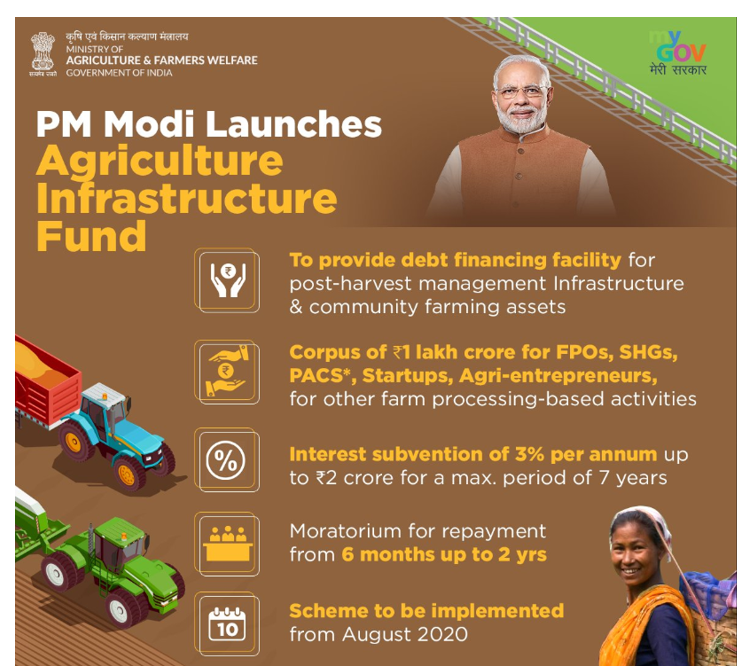
- Aims to support sustainable agriculture by funding infrastructure projects with a target of ₹1 lakh crore by 2025-26.
- Offers loans up to ₹2 crore with a 9% capped interest rate, 3% annual interest subvention, and credit guarantee fee reimbursement for seven years.
- Converges with schemes like PMFME for food processing and PM-KUSUM for renewable energy integration.
Impact of Initiatives
- Empowers agritech startups and fosters precision farming and value addition in agriculture.
- Supports rural industrialization, creating employment and boosting markets for processed agricultural goods.
- Promotes sustainability through green practices, digital tools, and eco-friendly technologies, aligning with sustainable agriculture goals.
- Enhances collaboration between entrepreneurs and farmers for a resilient agro-industry.
| PYQ: How does e-Technology help farmers in production and marketing of agricultural produce? Explain it. (150 words/10m) (UPSC CSE (M) GS-3 2023) |
| Practice Question: Discuss the role of initiatives like the Agriculture Infrastructure Fund (AIF) and Innovation and Agri-Entrepreneurship Development Program in transforming India’s agricultural sector. How do these programs contribute to sustainability and rural industrialization? (250 Words /15 marks) |
PRELIMS FACTS
1. UK Passes Assisted Dying Bill: A Landmark Step in End-of-Life Care Debate
(Source: Indian Express; Section: Explained; Page: 16)
| Context: |
|
Analysis of News:
Procedure Under the Bill
Eligibility Criteria:
- Patients must be terminally ill, over 18, and mentally capable of making decisions.
- They must have resided in England or Wales for at least 12 months before the request.
- Only conditions leading to death within six months qualify; disabilities and mental disorders are excluded.
Approval Process:
- A “first declaration” is signed in the presence of a coordinating doctor and a witness.
- The coordinating doctor conducts a preliminary assessment, followed by a review by an independent doctor.
- A High Court review ensures compliance with all conditions.
Final Steps:
- A 14-day reflection period is mandatory after court approval.
- The patient signs a “second declaration,” after which they are provided with an approved substance for self-administration.
Current UK Position
- Assisted dying and euthanasia remain illegal in the UK. Assisted suicide is punishable by up to 14 years in prison.
- Past attempts to legalize assisted dying have been unsuccessful due to polarized views.
- Proponents argue it alleviates suffering and ensures humane deaths, while detractors highlight risks of coercion and misuse, particularly for vulnerable populations.
Comparison with Indian Law
Legal Framework:
- In India, passive euthanasia was legalized by the Supreme Court in 2018, allowing withdrawal of life support under strict conditions.
- Assisted dying, as proposed in the UK Bill, is not permitted.
Implementation:
- India requires approval from medical boards and judicial oversight for passive euthanasia, emphasizing safeguards.
- The UK Bill involves court approvals but gives patients an active role in deciding their death.
Challenges:
- In India, procedural guidelines for passive euthanasia have been criticized as cumbersome.
- Recent modifications aim to streamline processes, but awareness and implementation remain limited.
2. Gussadi dance
(Source – The Hindu, International Edition – Page No. – 3)
| Context |
|
Gussadi Dance: Key Information
- Origin: The Gussadi dance is a traditional tribal art form of the Gond tribe, primarily practiced in the regions of Telangana.
- Performance: It is performed during the Dandari festival, celebrated after the harvest season, as a tribute to deities and ancestors.
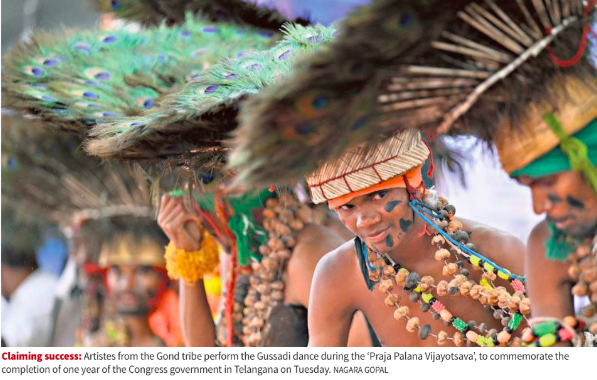
- Attire: Dancers wear elaborate costumes, including feathered headgear, ornaments, and body paint, symbolizing cultural identity and tribal heritage.
- Music: Accompanied by traditional instruments like drums, creating rhythmic beats that drive the dance.
- Occasions: Often showcased during festivals, cultural events, and government programs to promote tribal art.
- Recognition: Efforts are underway to preserve and promote the Gussadi dance as part of India’s intangible cultural heritage.
3. Centre proposes 95% govt. job reservation for locals in Ladakh
(Source – The Hindu, International Edition – Page No. – 5)
| Context |
|
Analysis of the news:
- The Union Ministry of Home Affairs (MHA) has proposed 95% reservation in government jobs for locals in Ladakh.
- One-third reservation for women in the hill councils of Ladakh has been suggested to promote gender equality.
- The Centre has agreed to work on drafting constitutional safeguards to preserve the land and culture of Ladakh, including declaring Urdu and Bhoti as official languages.
- A review of 22 pending laws is proposed to address local concerns, empowerment, and wildlife issues in Ladakh.
- The government has assured that recruitment for government posts will begin immediately, with gazetted posts to be filled through the Jammu and Kashmir Public Service Commission (JKPSC).
- Ladakh’s key demands include statehood, inclusion in the Sixth Schedule of the Constitution, tribal status, and a separate parliamentary seat for Leh and Kargil.
4. When a storm passes over land
(Source – The Hindu, International Edition – Page No. – 7)
| Context |
|

What is a landfall of a cyclone?
- Landfall Definition: Landfall occurs when the eye of a tropical cyclone moves over land, marking a shift from the ocean to land for the storm.
- Cyclone Structure: A tropical cyclone consists of the eye, which is a calm center, and the eyewall, which is made up of thunderstorms with heavy rain, strong winds, and lightning.
- Moisture Supply Over Water: While over the ocean, cyclones can draw moisture from the water’s surface, which fuels the storm’s growth, including new cloud formation and rainfall.
- Weakened by Land: When the cyclone crosses onto land, it loses its primary moisture supply and starts weakening due to reduced evaporation and cooling.
- Storm Surges: Cyclones can bring storm surges, which cause coastal flooding and disrupt drainage in inland areas.
- Post-Landfall Behavior: After landfall, depending on environmental conditions, a cyclone can weaken quickly, dissipate, or even re-emerge over the ocean. For example, Cyclone Gulab weakened after landfall in 2021 but re-emerged as Cyclone Shaheen.
5. South Korean President declares martial law, MPs vote to oppose the move
(Source – The Hindu, International Edition – Page No. – 1)
| Context |
|
Analysis of the news:
- South Korean President Yoon Suk Yeol declared martial law, accusing the opposition of being “anti-state forces.”
- The declaration was made to protect South Korea from perceived threats posed by North Korea and to safeguard democracy.
- Lawmakers quickly opposed the declaration, and the National Assembly was sealed.
- Protesters gathered outside parliament, demanding President Yoon’s arrest.
- 190 MPs voted against the martial law and called for its removal, invoking the constitution’s provision.
- Martial law was imposed after Yoon’s approval rating dropped to 19%, citing the National Assembly as a threat to the country’s liberal democratic order.
- The decree banned political activities, fake news, and actions against the democratic system.
- The U.S. expressed grave concern, while China urged caution for its nationals in South Korea.
6. SARTHIE 1.0 INITIATIVE
(Source – https://pib.gov.in/PressReleseDetail.aspx?PRID=2080033®=3&lang=1 )
| Context |
|
SARTHIE 1.0 Campaign: Key Highlights
- Joint Initiative: Launched by the Department of Social Justice and Empowerment (DoSJE) and National Legal Services Authority (NALSA), Government of India.
- Target Groups: Focuses on empowering marginalized communities, including SCs, OBCs, transgender persons, senior citizens, EWS, sanitation workers, waste pickers, substance abuse victims, and beggars.
- Objectives:
- Enhance awareness of legal rights, welfare entitlements, and government schemes.
- Assist in accessing benefits and entitlements through awareness camps and seminars.
- Support for SDGs:
- Goal 1 (No Poverty): Implementing social protection systems to reduce poverty.
- Goal 10 (Reduced Inequalities): Advocating for inclusive policies to achieve equality.
- NALSA’s Role: Utilizes its nationwide network to organize awareness activities at state, district, and taluka levels, targeting urban and rural populations.
7. MARITIME INDIA VISION 2030
(Source – https://pib.gov.in/PressReleseDetail.aspx?PRID=2080012®=3&lang=1 )
| Context |
|
Maritime India Vision (MIV) 2030: Overview
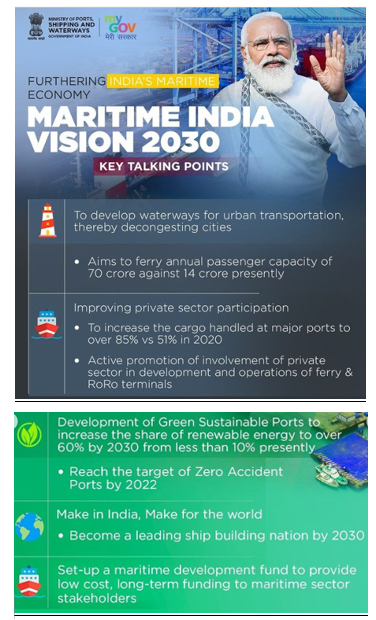
Progress in the Maritime Sector (2022-2024)
- Port Capacity: Increased from 1598 MMTPA (FY 2022) to 1630 MMTPA (FY 2024).
- Vessel Turn Around Time (TAT): Reduced from 53 hours (FY 2022) to 48 hours (FY 2024).
- Ship Berth Day Output: Improved from 16,000 MT (FY 2022) to 18,900 MT (FY 2024).
- Global Recognition: Two Indian ports featured in the global top 30 ports.
- Logistics Performance Index (LPI): Improved ranking from 44 (2018) to 22 (2023).
- National Waterways Cargo Volume: Increased from 108 MMT (FY 2022) to 133 MMT (FY 2024).
- Coastal Tonnage: Increased from 260 MMT (FY 2022) to 324 MMT (FY 2024).
Financial Investments
- Capital Expenditure: Increased by 37% to ₹7571 crore (FY 2024) from ₹5527 crore (FY 2022).
- Gross Budget Support (GBS): Increased by 54% to ₹1687 crore (FY 2024) from ₹1099 crore (FY 2022).
- Port Development Projects: 75 projects awarded, enhancing cargo handling and operational efficiency.
Impact on Maritime Trade and Employment
- Port Traffic: Increased from 720 MMT (FY 2022) to 820 MMT (FY 2024).
- Employment Generation: Growth in cargo handling, infrastructure, and cruise tourism created significant job opportunities across related sectors.
Monitoring Mechanisms
- Sagar Manthan Portal: Tracks Key Performance Indicators, projects, and long-term strategies for monitoring progress.
- ViBhaS and NAVIC Cells: Facilitate tracking, ideation, and innovation to ensure alignment with MIV objectives.
| Practice Question: Discuss the significance of the Maritime India Vision (MIV) 2030 in enhancing India’s maritime infrastructure and trade competitiveness. How has it contributed to employment generation and sustainable development in the sector? (150 Words /10 marks) |
8. Pradhan Mantri Ayushman Bharat Health Infrastructure Mission (PM-ABHIM)
(Source – https://pib.gov.in/PressReleseDetail.aspx?PRID=2080067®=3&lang=1 )
| Context |
|
Pradhan Mantri Ayushman Bharat Health Infrastructure Mission (PM-ABHIM)
- Objective: Strengthen health systems and institutions to provide care at primary, secondary, and tertiary levels while preparing for pandemics and disasters.
- Timeframe and Funding: Centrally Sponsored Scheme (CSS) with a total outlay of ₹64,180 crore for 2021-22 to 2025-26.
- Key Components:
- Construction of 17,788 Ayushman Arogya Mandirs (Health & Wellness Centres) at sub-centres.
- Establishment of 11,024 Urban Ayushman Arogya Mandirs focusing on slum areas.
- Development of 3,382 Block Public Health Units (BPHUs).
- Setting up 730 District Integrated Public Health Labs (IPHL), one per district.
- Establishment of 602 Critical Care Hospital Blocks (CCBs) in districts with populations over 5 lakhs.
- Implementation: States/UTs execute the scheme under the National Health Mission framework with technical and financial support from the Ministry of Health and Family Welfare (MoHFW).
- Focus on Awareness: Awareness campaigns and IEC activities are conducted periodically by state health departments.
- Significance: The scheme integrates health reforms to strengthen public health delivery and improve disaster preparedness.
9. Ratapani Wildlife Sanctuary Declared Madhya Pradesh’s 8th Tiger Reserve, Boosting Conservation and Ecotourism
(Source: Indian Express)
|
Context: |
|
Analysis of News:
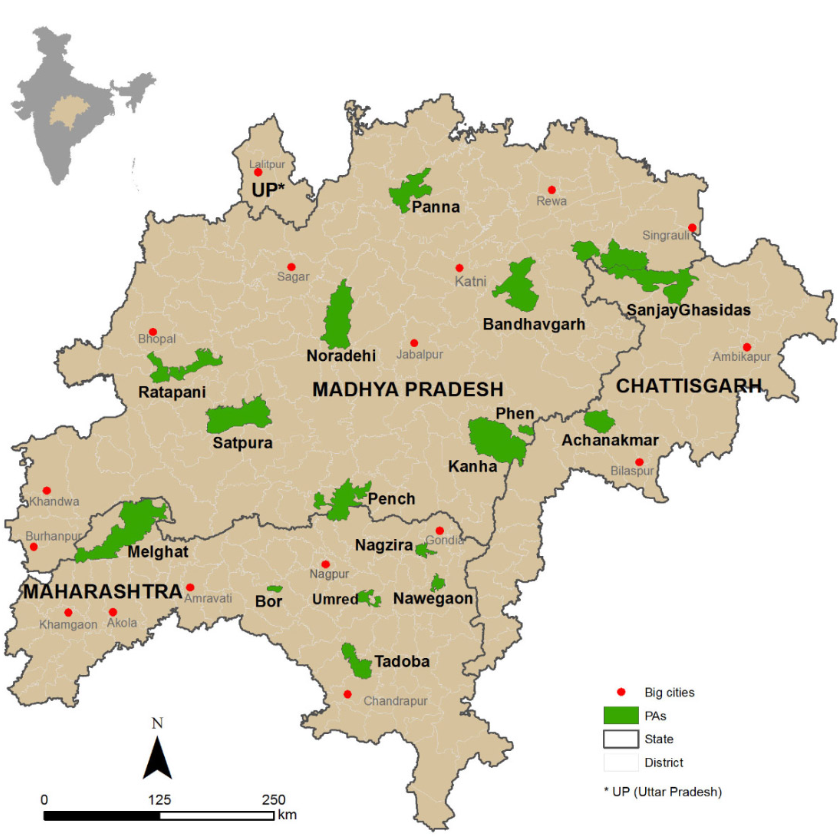
About Ratapani Wildlife Sanctuary:
- Location: Situated in Raisen and Sehore districts of Madhya Pradesh, it spreads over 825.90 sq km.
- This rocky forest with aquatic environment is spread on the Vindhya Hills.
- It runs parallel on the northern side of the Narmada River. The Kolar River forms the western boundary of the Sanctuary.
- The Sanctuary has Bhimbetka, a group of rock shelters and rock paintings, which is one of the ” World Heritage Site ” declared by UNESCO.
- It also encompasses many other historical and religious destinations like Ginnourgarh Fort, POW camp, Keri Mahadeo, Ratapani dam, Jholiyapur dam, etc.
- Landscape: It is rugged with hills, valleys, plateaus, and plains.
- Flora:
-
- The forest of this Sanctuary is of dry deciduous and moist deciduous types.
-
- About 55% of the area is covered by teak. The remaining mixed forests consist of various dry deciduous species.
- Fauna:
-
- The regal striped cat is the apex predator, and estimates suggest that 40 tigers roam these forests.
-
- Chinkara, an endangered species, is also found in the Sanctuary.
-
- It is also home to animals like the Panther, Hyena, Jackal, Indian Fox, Wild Dog, Jungle Cat, Small Indian Civet, Blue Bull, Chinkara, Black Buck, Chausingha, Spotted Deer, Barking Deer, etc.
Benefits for Local Communities
- The tiger reserve status is expected to enhance economic opportunities through ecotourism, generating employment and improving livelihoods.
- Eco-development programs will further support the local population by ensuring inclusive development while maintaining ecological balance.
Improved Conservation and Funding
- With its designation as a tiger reserve, Ratapani will now benefit from NTCA funding, enabling better management and conservation efforts.
- The notification defines the core area as critical tiger habitat under Section 38V of the Wildlife (Protection) Act, 1972, emphasizing its importance for biodiversity.
Impact on Local Villages
- Nine revenue villages covering 26.947 square kilometers are integrated into the buffer zone, ensuring the rights of local inhabitants remain unaffected.
- This inclusive approach balances conservation priorities with the well-being of local communities.
Broader Context in Madhya Pradesh
- Ratapani becomes the eighth tiger reserve in Madhya Pradesh, reinforcing the state’s leadership in tiger conservation.
- This follows similar progress in Madhav National Park, which has recently received approval to be designated as a tiger reserve.

